House Post (RBCM 2)
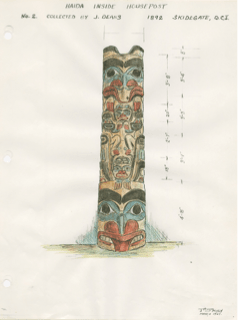
John Smyly made two coloured drawings of the house post in 1967.
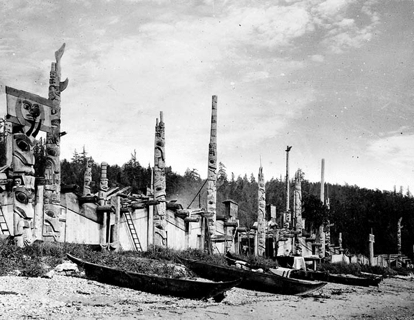
The post stood inside one of these houses at HlGagilda Llnagaay, perhaps the second house from the left. George M. Dawson photograph, 1878, B-03660.
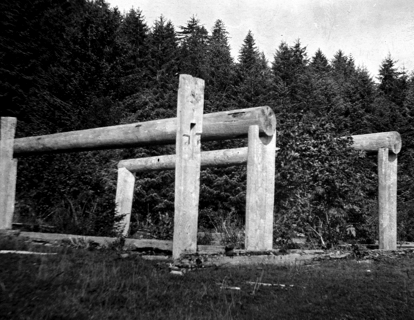
A photograph of a house frame at HlGagilda Llnagaay shows the house posts, now missing carvings, and the huge ceiling beams they support. Frank C. Swannell photograph, 1911, A-06143.
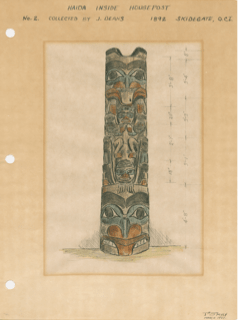
John Smyly made two coloured drawings of the house post in 1967.
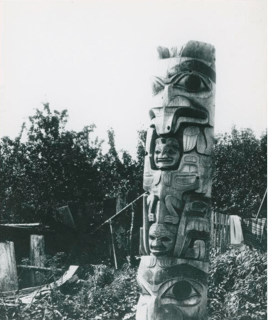
Richard Maynard photographed the house post at HlGagilda Llnagaay in 1884. PN 5840
This post supported a roof beam of a house called House So Large That People Must Shout To Make Themselves Heard In It, owned by a chief called Nostakana of the Great House division of the Eagles of HlGagilda Llnagaay (Skidegate village). Like a similar house post from HlGagilda Llnagaay (RBCM 1) called The House Which Chiefs Peep At From Concealment (or House Chiefs Peeped At From A Distance), it was acquired by James Deans on Haida Gwaii in 1892. Deans was a retired employee of the Hudson’s Bay Company, with an interest in Northwest Coast Indigenous traditions, particularly Haida art and culture.
The museum’s catalogue entry for the related house post from HlGagilda Llnagaay (RBCM 1) says it was made by a member of the Edenshaw family from Masset; its style suggests that the carvers Albert Edward Edenshaw and his nephew Charles Edenshaw worked on it together. This post (RBCM 2) is similar in style, but it is unclear who the carver was. A frustrating lack of documentation is typical of late 19th century collections. James Deans saw himself as a student of Haida culture and published a book about oral traditions called Tales from the Totems of the Hidery in 1895. But either he did not get information about the carvers or he did not think it was important to record. Similarly, the description of the figures on the pole is imprecise. The museum’s old catalogue entry, perhaps based on information from Deans, says the figures are a raven, a bear and perhaps a dogfish or sea monster. It does not explain that Raven at the top of the pole has a broken beak that refers to one of the many stories about him. The bottom figure is a killer whale. A bear-like figure appears to be riding on the whale’s back. Above the whale’s head is a face with a labret (lip plug) wearing a headdress resembling the kind of hat worn by shamans. These figures may illustrate another story, that of Nanasimgit whose wife, identified by the labret in her lower lip, was abducted by a killer whale. Nanasimgit journeyed to the killer whale’s undersea house and rescued her.
Do you have a story to share about this item? Add your voice to the community.